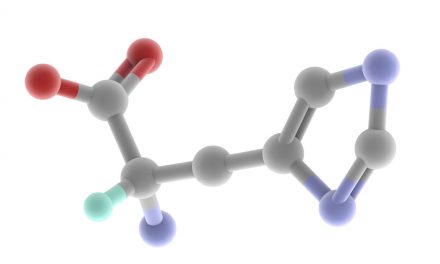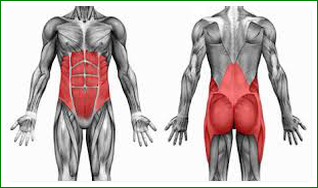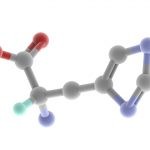Article content taken from “2008 Physical Activity Guidelines for Americans” by www.health.gov/paguidelines for informational purposes.
– Read also: “Physical Activity Has Many Health Benefits – Part 1”
The Health Benefits of Physical Activity
Studies clearly demonstrate that participating in regular physical activity provides many health benefits. These benefits are summarized in the accompanying table. Many conditions affected by physical activity occur with increasing age, such as heart disease and cancer. Reducing risk of these conditions may require years of participation in regular physical activity. However, other benefits, such as increased cardiorespiratory fitness, increased muscular strength, and decreased depressive symptoms and blood pressure, require only a few weeks or months of participation in physical activity.
The health benefits of physical activity are seen in children and adolescents, young and middle-aged adults, older adults, women and men, people of different races and ethnicities, and people with disabilities and chronic conditions. The health benefits of physical activity are generally independent of body weight. Adults of all sizes and shapes gain health and fitness benefits by being habitually physically active. The benefits of physical activity also outweigh the risk of injury and sudden heart attacks, two concerns that prevent many people from becoming physically active. The following sections provide more detail on what is known from research studies about the specific health benefits of physical activity and how much physical activity is needed to get the health benefits.
Premature Death
Strong scientific evidence shows that physical activity reduces the risk of premature death (dying earlier than the average age of death for a specific population group) from the leading causes of death, such as heart disease and some cancers, as well as from other causes of death. This effect is remarkable in two ways:
- First, only a few lifestyle choices have as large an effect on mortality as physical activity. It has been estimated that people who are physically active for approximately 7 hours a week have a 40 percent lower risk of dying early than those who are active for less than 30 minutes a week.
- Second, it is not necessary to do high amounts of activity or vigorous-intensity activity to reduce the risk of premature death. Studies show substantially lower risk when people do 150 minutes of at least moderate-intensity aerobic physical activity a week.
Research clearly demonstrates the importance of avoiding inactivity. Even low amounts of physical activity reduce the risk of dying prematurely. As the figure on page 1 1 shows, the most dramatic difference in risk is seen between those who are inactive (30 minutes a week) and those with low levels of activity (90 minutes or 1 hour and 30 minutes a week). The relative risk of dying prematurely continues to be lower with higher levels of reported moderate- or vigorous-intensity leisure-time physical activity. All adults can gain this health benefit of physical activity. Age, race, and ethnicity do not matter. Men and women younger than 65 years as well as older adults have lower rates of early death when they are physically active than when they are inactive. Physically active people of all body weights (normal weight, overweight, obese) also have lower rates of early death than do inactive people.
Cardiorespiratory Health
The benefits of physical activity on cardiorespiratory health are some of the most extensively documented of all the health benefits. Cardiorespiratory health involves the health of the heart, lungs, and blood vessels.
Heart diseases and stroke are two of the leading causes of death in the United States. Risk factors that increase the likelihood of cardiovascular diseases include smoking, high blood pressure (called hypertension), type 2 diabetes, and high levels of certain blood lipids (such as low-density lipoprotein, or LDL, cholesterol). Low cardiorespiratory fitness also is a risk factor for heart disease.
People who do moderate-or vigorous-intensity aerobic physical activity have a significantly lower risk of cardiovascular disease than do inactive people. Regularly active adults have lower rates of heart disease and stroke, and have lower blood pressure, better blood lipid profiles, and fitness. Significant reductions in risk of cardiovascular disease occur at activity levels equivalent to 150 minutes a week of moderate-intensity physical activity. Even greater benefits are seen with 200 minutes (3 hours and 20 minutes) a week. The evidence is strong that greater amounts of physical activity result in even further reductions in the risk of cardiovascular disease.
Everyone can gain the cardiovascular health benefits of physical activity. The amount of physical activity that provides favorable cardiorespiratory health and fitness outcomes is similar for adults of various ages, including older people, as well as for adults of various races and ethnicities. Aerobic exercise also improves cardiorespiratory fitness in individuals with some disabilities, including people who have lost the use of one or both legs and those with multiple sclerosis, stroke, spinal cord injury, and cognitive disabilities.
Moderate-intensity physical activity is safe for generally healthy women during pregnancy. It increases cardiorespiratory fitness without increasing the risk of early pregnancy loss, preterm delivery, or low birth weight. Physical activity during the postpartum period also improves cardiorespiratory fitness.
Metabolic Health
Regular physical activity strongly reduces the risk of developing type 2 diabetes as well as the metabolic syndrome. The metabolic syndrome is defined as a condition in which people have some combination of high blood pressure, a large waistline (abdominal obesity), an adverse blood lipid profile (low levels of high-density lipoprotein [HDL] cholesterol, raised triglycerides), and impaired glucose tolerance.
People who regularly engage in at least moderate-intensity aerobic activity have a significantly lower risk of developing type 2 diabetes than do inactive people. Although some experts debate the usefulness of defining the metabolic syndrome, good evidence exists that physical activity reduces the risk of having this condition, as defined in various ways. Lower rates of these conditions are seen with 120 to 150 minutes (2 hours to 2 hours and 30 minutes) a week of at least moderate-intensity aerobic activity. As with cardiovascular health, additional levels of physical activity seem to lower risk even further. In addition, physical activity helps control blood glucose levels in persons who already have type 2 diabetes.
Physical activity also improves metabolic health in youth. Studies find this effect when young people participate in at least 3 days of vigorous aerobic activity a week. More physical activity is associated with improved metabolic health, but research has yet to determine the exact amount of improvement.
to be continued…
– Read also: “Physical Activity Has Many Health Benefits – Part 1”
For more informations visit www.health.gov














